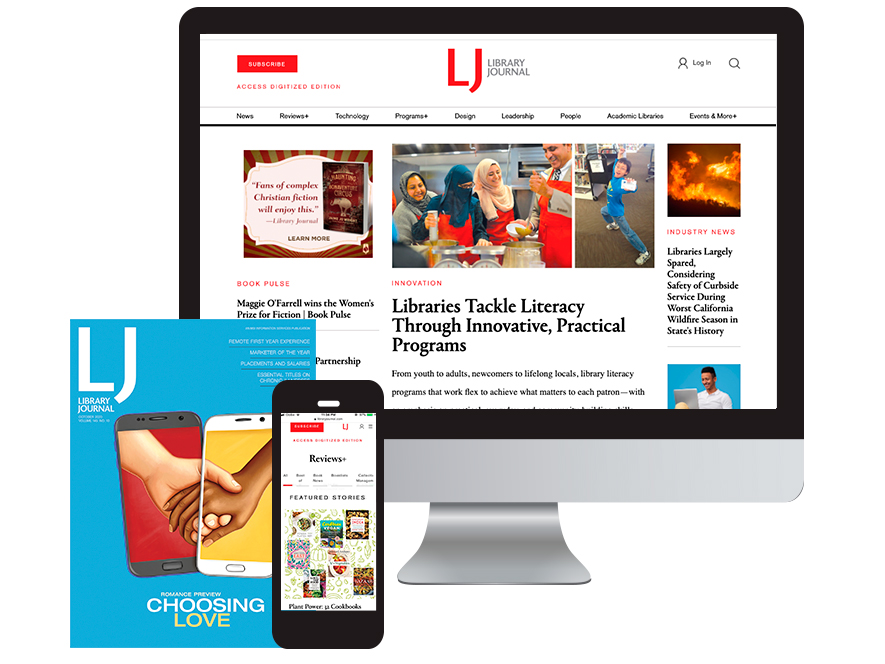Elevate Your Library, Part 1: Budget Cuts and Uncertainties
Librarians are feeling the squeeze. As they seek to meet changing patron expectations and a dynamic technological environment, they are often simultaneously faced with budget cuts and leadership looking over their shoulder for evidence of institutional value.

By Barbara Rad-El
In a survey of 1,843 librarians from more than 30 countries, published by Library Journal in the “2021 State of Academic Libraries Report,” respondents rated the following aspects of their library’s mission as being of high importance:
- Provide an excellent patron experience
- Provide course materials and support faculty
- Teach students research and information skills
- Support the institutional mission
- Connect the library to the academic ecosystem
- Prove library value to institutional leadership
How those goals are defined has changed with time, as the role of the librarian in academia has expanded greatly in recent years. They may have to simultaneously be a director, a budget manager, a research consultant, a teacher, a copyright manager, an event planner, an emergency coordinator and, at times, a team cheerleader. As part of facilitating learning, teaching and research, librarians are also being called upon to offer even more services, including 24/7 online support and remote access to course materials.
As they develop new approaches and adopt new solutions to meet the greater demands placed on them, library managers are facing key questions:
- How can we maximize cost-effectiveness, given budgetary constraints?
- What kinds of technology can help us be more adaptive in a dynamic, diverse environment?
- What strategic role can we play in today’s teaching and learning processes?
In this series of blog posts, we’ll be taking a close look at how libraries are answering those questions, what else they can do, and how Ex Libris solutions fit into the picture.
Let’s start with the most obvious, immediate and nearly universal issue facing libraries today: budget cuts and uncertainties.
How are libraries doing more with less?
Librarians are feeling the squeeze. As they seek to meet changing patron expectations and a dynamic technological environment, they are often simultaneously faced with budget cuts and leadership looking over their shoulder for evidence of institutional value. There are fewer staff members and less available funds, pushing libraries to search for ways to maximize what they already have and to rethink collection development strategies. To optimize their budgets and demonstrate value, libraries are consolidating, automating and using analytics to improve decision making.
Consolidation
Many libraries are using systems that are heavily siloed, with a patchwork of solutions, disjointed workflows and separate management operations. This is inefficient, frustrating and costly. As a result, many libraries have begun consolidating the management of print, electronic and digitized material, as well as other library operations, which eliminates artificial barriers, streamlines workflows, and introduces greater coherence.
Such efficient library management is inherent to the broad Ex Libris portfolio and Higher Education Platform, integrating everything from collection development to discovery to resource sharing. Here’s an example: a faculty member’s request for specific mandatory material, made through Ex Libris Leganto, may automatically trigger an acquisition workflow in Ex Libris Alma, the unified library management system for print, electronic and digital resources. Alma provides the essential data to Rialto, a one-stop vendor-neutral marketplace for academic content. The newly acquired item then becomes available to students, automatically, through Leganto, Primo or Summon discovery services.
Automation
Automation is another key tool for saving time and resources. By minimizing or, ideally, eliminating time-consuming routine tasks in the librarians’ workload, fewer staff members can accomplish more in a shorter amount of time. Reference librarians, for example, are free to attend to those aspects of their day-to-day work that require their unique expertise, rather than expending effort on high cost, low return activities such as manual data entry.
Automation is integral to all Ex Libris solutions. Rapido and RapidILL customers, for example, report significantly faster turnaround times. In many cases, this is accomplished without the need for staff intervention at all, as the process involves completely unmediated workflows. Ex Libris solutions also support customized unmediated purchasing, including demand-driven and evidence-based acquisitions, without requiring additional staff.
In the event of unusual events, such as the pandemic, automation allows librarians to work more efficiently, respond faster and stay focused on helping their patrons, instead of managing tedious technical adjustments. And, as solutions on the Ex Libris Higher Ed Platform are cloud-based SaaS products, upgrades and maintenance are cost-free and completely seamless.
Analytics
Libraries can proactively and automatically identify needs and make smarter, faster decisions, if they have the right analytics solutions. This can impact acquisitions, borrowing, lending and much more, making them more efficient and accurate.
Analytics underpins the Ex Libris Higher Ed Platform, allowing the library to perform different evaluations with a broad and in-depth perspective. For example, the library can evaluate course resource use (as measured through both loans and click-throughs), and then leverage this information in the automated Title Matching Fast (TMF) service for cost-effectively optimizing the library collection.
Next: Agility and adaptation
In our next blog, we will move on to the question of adaptive and agile technology, and what role it plays in the modern, dynamic library.
For more on the topic of this blog series, read the full whitepaper “Five Questions That Can Elevate Your Library” here.
SPONSORED BY

RELATED
ALREADY A SUBSCRIBER? LOG IN
We are currently offering this content for free. Sign up now to activate your personal profile, where you can save articles for future viewing










Add Comment :-
Comment Policy:
Comment should not be empty !!!